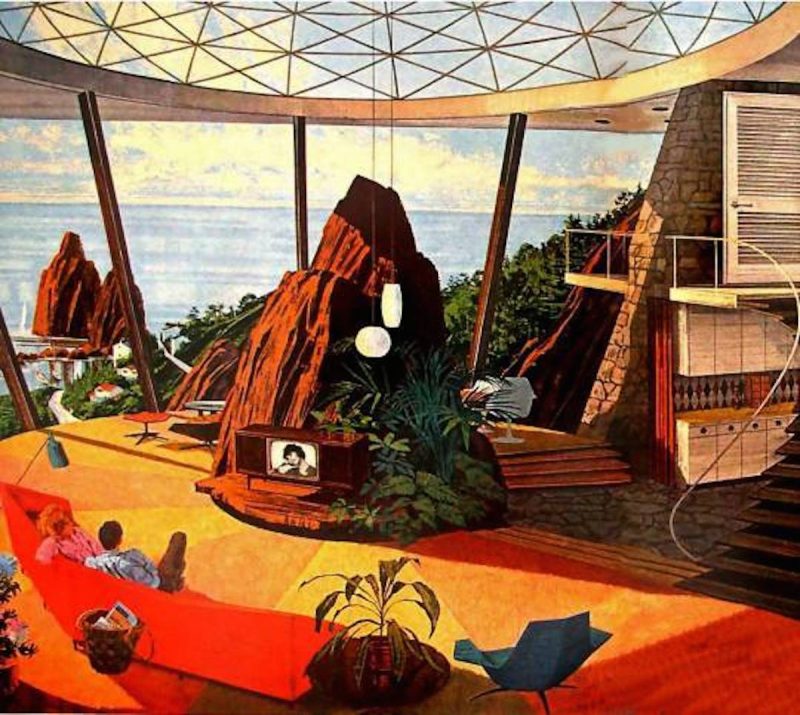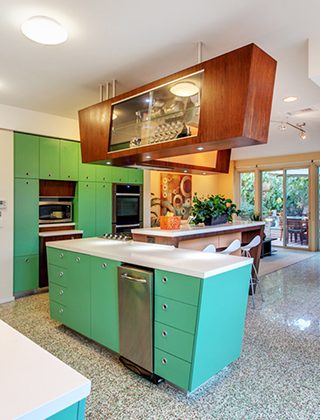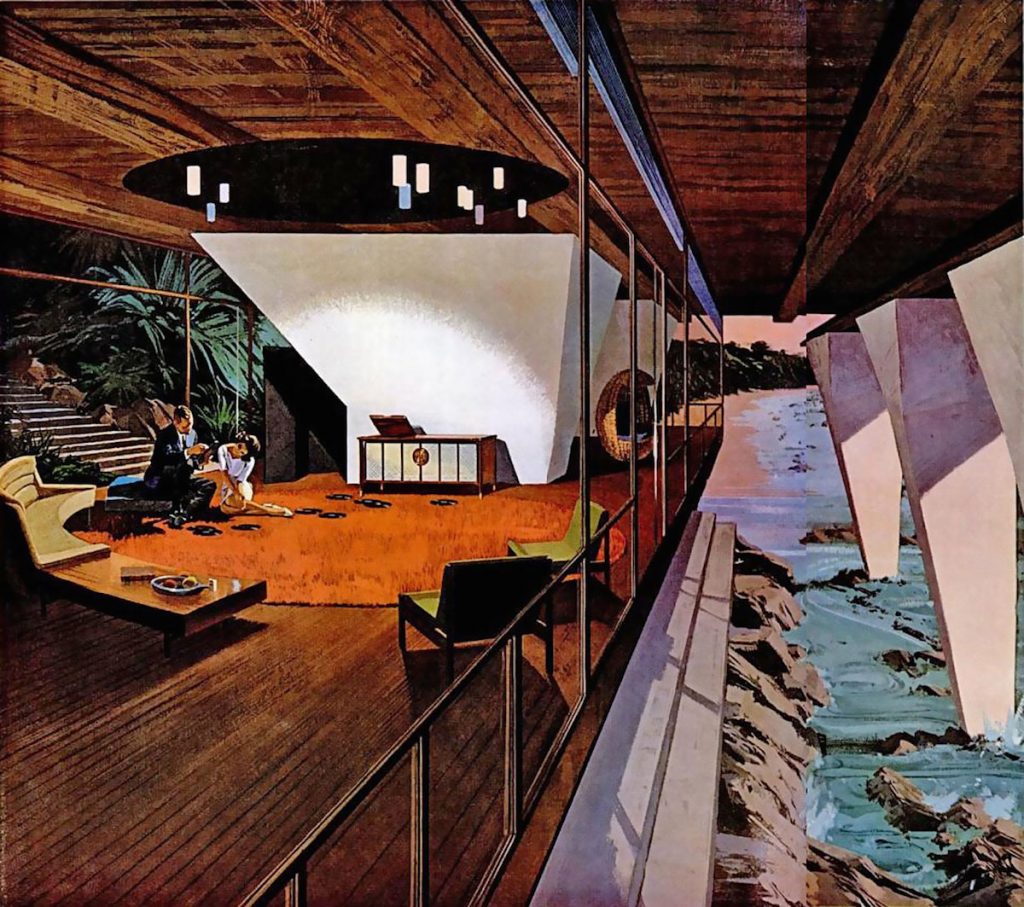
In the early 1960s, Motorola hired illustrator Charles Schridde to illustrate the company’s technology featured in the homes of tomorrow. With stunning landscapes, impossible cantilevers and other fantastic features, his artwork depicts lavish structures that push the boundaries of architectural potential toward that of science fiction. Naturally, a Motorola product is at the center of each showcase home.His drawings give us a great look of what the past thought the future would look like.
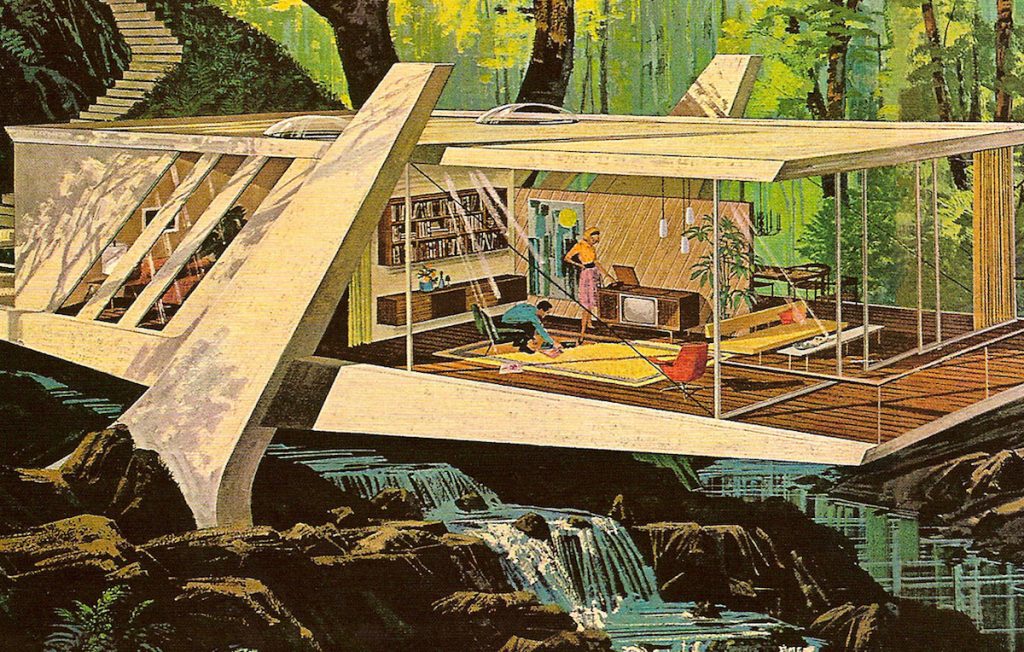
You might be asking yourself why Motorola would want to create such advertisements. To answer that, you have to put yourself in this post-WWII American time period, when Americans were feeling good about themselves and the economic future was more promising than it had been in decades.
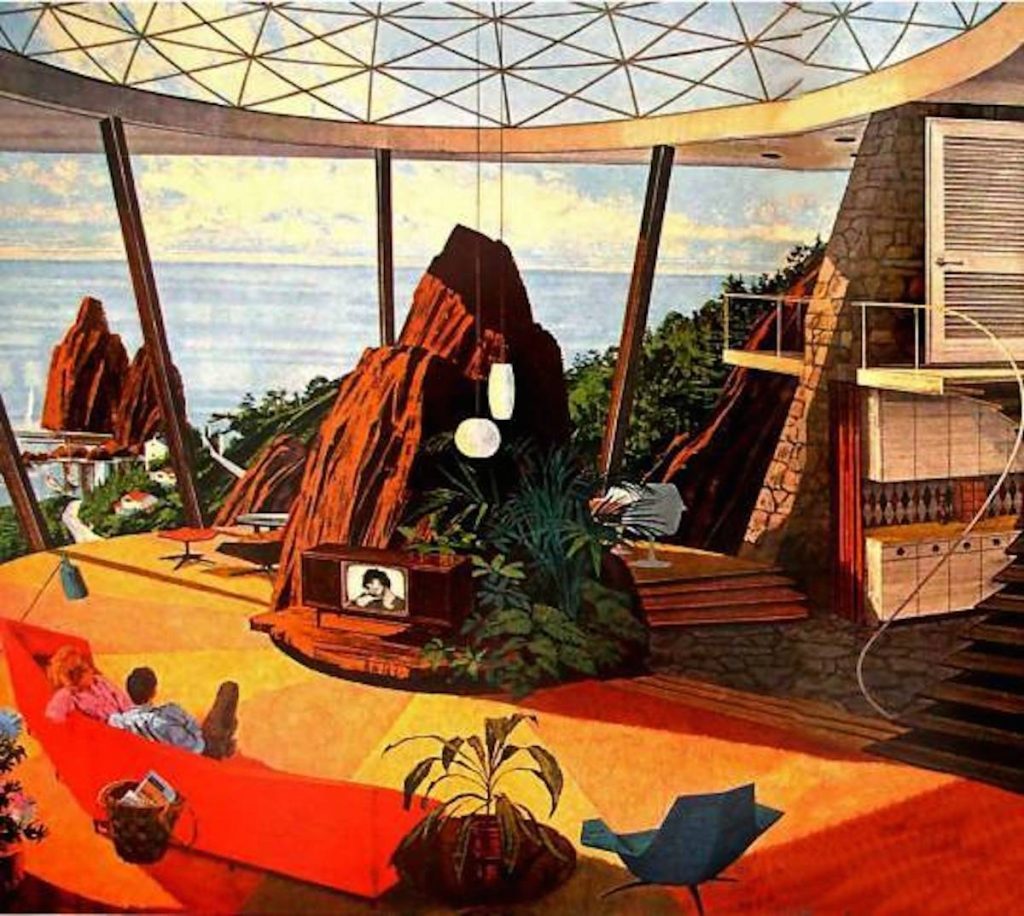
Home technology companies like Motorola wanted to capitalize on optimism and position their products in consumers’ minds to show that what they were selling would be relevant for the future. When consumers saw these ads in publications like Time magazine, picking up one of these electronic products was like one more step toward achieving that ultimate future.
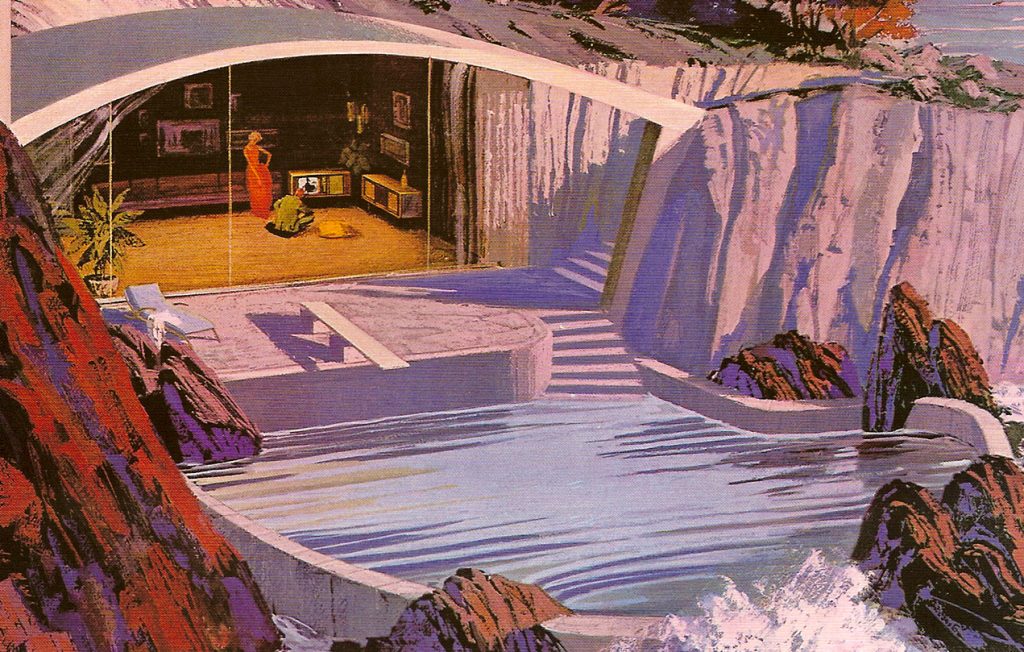
Schridde’s illustrations feature all of the classic Mid Century Modern hallmarks such as sharp lines, expressive architecture, open spaces and bold colors. The real difference is that everything is pushed past what is realistically possible and into fantastical physics, like something you would see in a science fiction film, an Incredibles movie or perhaps the secret lair to one of James Bond’s villains.
A big element you might notice is the actual location where these homes are built. We aren’t given any indication of a region or city, but we can see that these homes are built in some unique landscapes. These stunning environments add to the futuristic element that Schridde was going for.
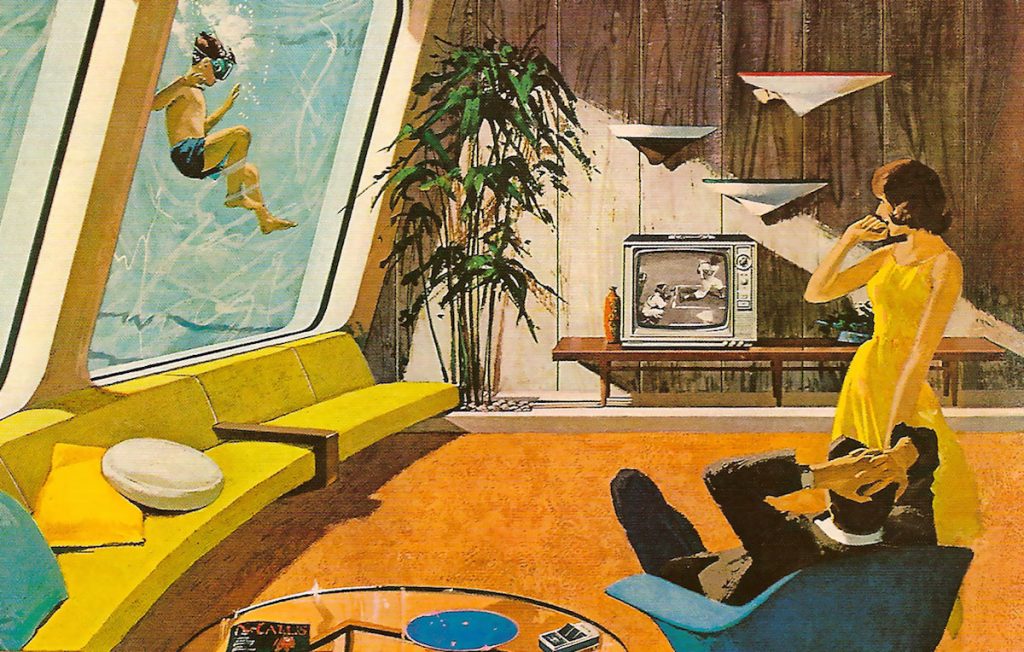
When you look at ad above, depicting a couple watching a baseball game on tv, most of the interior decor looks attainable. There is gorgeous wood paneling, huge windows, sculptural artwork and typical mid century furniture. It could be anybody’s home if you just ignore the fact that it appears that the exterior wall seems to be under water.
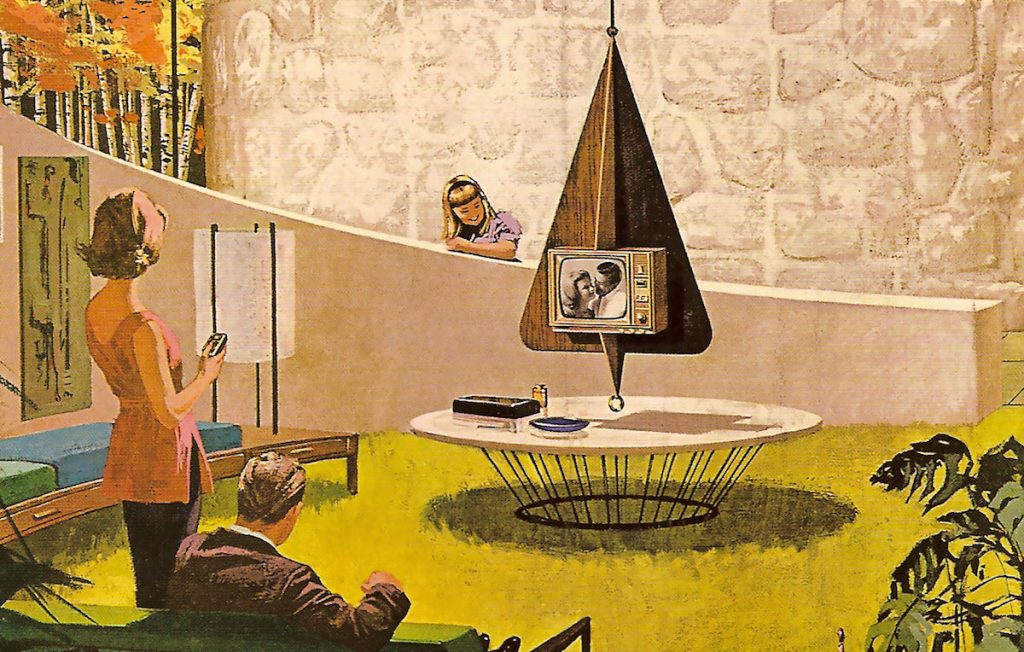
Another element that is prevalent in these ads is the amount of interior space. While open floor plans are a staple of MCM, Charles Schridde’s interiors are expansive.
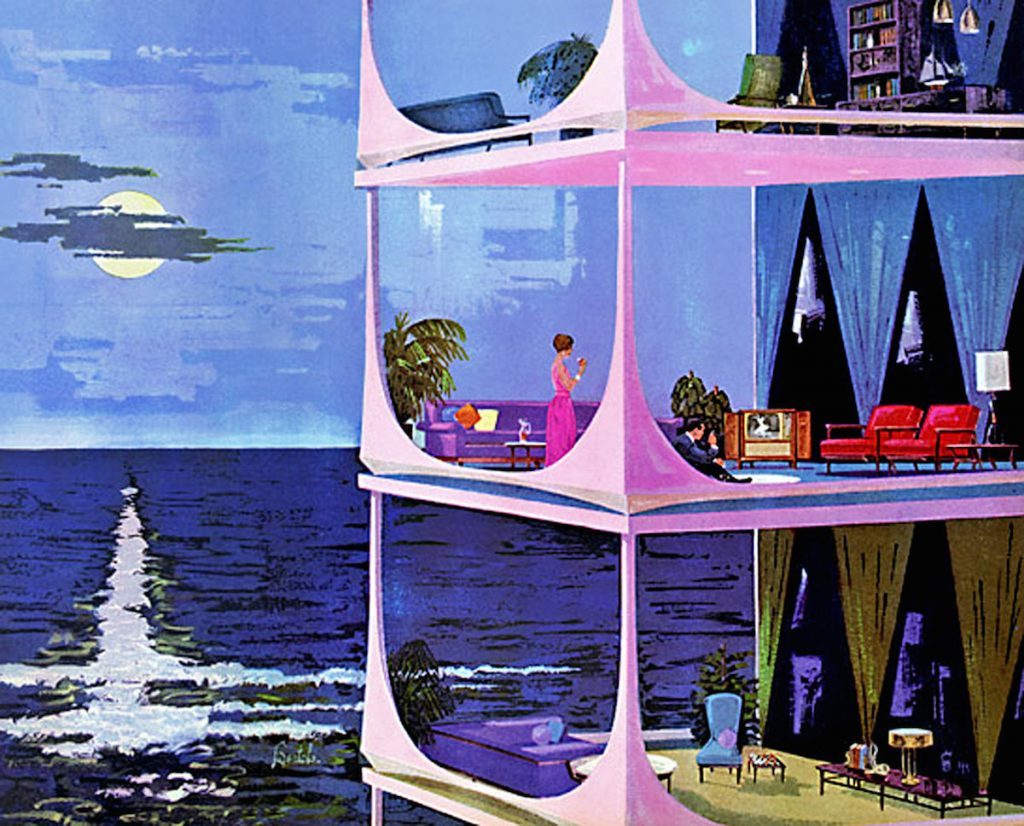
Of course, these homes are not intended to depict a present reality, but to inspire an optimistic vision for a potential future. Mid century architecture already pushed the boundaries of possibility, challenging convention as well as physics. Charles Schridde’s work continued in that vein, pushing architectural imagination to new heights.

